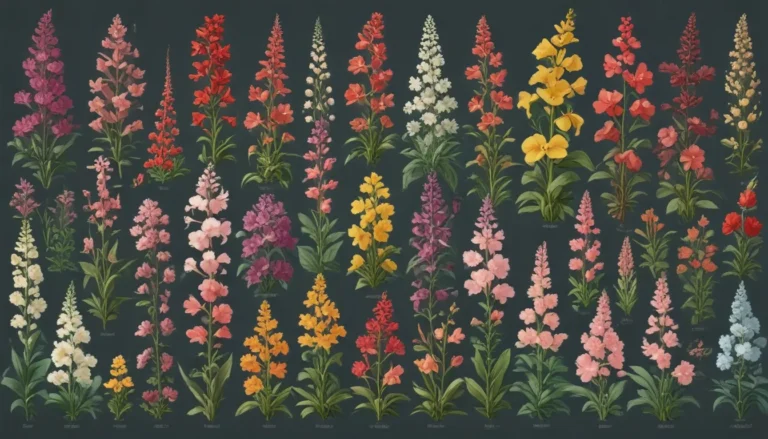The Ultimate Guide to Houseplant Propagation for Beginners

Are you a plant lover who just can’t get enough greens in your home? Do you dream of turning your house into a lush jungle, but your budget just can’t keep up with your plant obsession? Well, I’ve got good news for you! There’s a simple, cost-effective way to expand your plant collection – propagation!
Propagation is the process of growing new plants from cuttings or seeds. It’s not as complicated as it sounds, and with a little know-how, you can easily propagate your houseplants at home.
In this comprehensive guide, we’ll cover everything you need to know about houseplant propagation. From essential tools to different propagation techniques, we’ve got you covered. So, let’s dive in and learn how to turn one plant into many!
What Is Plant Propagation?
In simple terms, plant propagation is the act of taking a piece of a mother plant – a cutting or a seed – and coaxing it to grow roots and shoots. The goal is to create new plants that are genetically identical to the parent plant.
Propagation can involve taking stem cuttings, leaf cuttings, seed propagation, or cane cuttings, depending on the plant species. Regardless of the method, successful propagation results in new additions to your plant collection.
What Do You Need in Your Propagation Toolbox?
Before you start propagating your houseplants, there are a few essential tools you’ll need:
Necessary Tools:
- Floral Knife/Small Pocket Knife: For making clean cuts that won’t damage the plant’s vascular tissue
- Watering Can/Misting Bottle: To provide moisture without overwatering
- Heat Mat: To create warm conditions that aid in root growth
- Plastic Bag/Plastic Bowl: To maintain humidity around the cuttings
- Home for Your Cuttings: Choose a pot, cell pack, or florist’s foam to grow your cuttings
- Tape Measure/Ruler: To measure and cut your cuttings to the right size
- Mother Plant: The plant from which you’ll take cuttings
Optional Tools:
- Commercial Rooting Hormone: Helps cuttings grow roots faster
- Grow Light: Provides additional light for optimal plant growth
If you’re starting from seeds, you’ll also need pots or seed-starting trays.
More About the Necessities
Let’s take a closer look at the essential tools for successful plant propagation. These tools will ensure that your propagation experiment goes smoothly:
Floral Knife/Small Pocket Knife
A sharp knife is crucial for making clean cuts on your plant cuttings. Damaging the vascular tissue can hinder root and shoot production, so always use a clean, sharp blade.
Watering Can/Misting Bottle
Newly cut propagules are susceptible to disease and root rot, so it’s essential to control their moisture levels. A watering can or misting bottle allows you to provide water without overwatering the cuttings.
Heat Mat
Ensuring that your soil is warm promotes faster root growth. A heat mat can mimic greenhouse conditions and accelerate the rooting process for your cuttings. Consider investing in a quality heat mat to maintain the optimal temperature for plant propagation.
Plastic Bag/Plastic Bowl
Maintaining high humidity around the cuttings is essential for successful propagation. A plastic bag or bowl can create a greenhouse-like environment that prevents the cuttings from losing water too quickly.
Home for Your Cuttings
Once you’ve taken your cuttings, you’ll need a place for them to grow roots and shoots. Whether it’s a pot of soil, a plastic cell pack, or a vase of water, make sure your cuttings have a suitable growing medium.
Tape Measure/Ruler
Cutting your plant cuttings to the right size is crucial for successful propagation. Measure your cuttings and make clean cuts to ensure they have the best chance of rooting and growing.
Mother Plant
The type of mother plant you choose will determine the propagation technique and care required for your cuttings. Select a healthy, mature plant from which to take your cuttings for the best results.
More About the Optional Tools
While these tools aren’t essential, they can enhance your propagation experience and increase your chances of success:
Commercial Rooting Hormone
Rooting hormones can help your cuttings grow roots faster and more effectively. Look for products containing indolebutyric acid (IBA) or naphthaleneacetic acid (NAA) for optimal results.
Grow Light
If you need additional light for your cuttings, a grow light can provide the right amount of light without causing harm. Choose a suitable grow light based on your plant’s needs and ensure it’s positioned correctly for optimal growth.
It’s All About the Media
Your choice of growing media plays a crucial role in successful plant propagation. Here are a few key considerations when selecting a growing medium:
- Air/oxygen: Ensure the media provides adequate air circulation for root development.
- Water: Opt for a media that retains moisture without becoming waterlogged.
Choose a soil mix that contains perlite or peat moss, as they enhance oxygen availability and promote healthy root growth. Consider using synthetic media like florist’s foam for cuttings, as they retain moisture and air well.
Propagation Techniques and Plants to Experiment With
Now that you have your tools and growing media ready, it’s time to start propagating your plants! Here are some popular propagation techniques and plant species to experiment with:
Indoor Seed Propagation
- Plants: Tomatoes, basil, peppers, peace lilies, anthuriums
- Method: Start seeds in plastic seed-starting cells with drainage holes
Stem Tip Cuttings
- Plants: Poinsettia, croton, basil, pothos
- Method: Take stem cuttings and dip in rooting hormone, then plant in a pot with soil
Leaf Cuttings
- Plants: African violets, hoyas, snake plants, Christmas cacti
- Method: Root leaf cuttings in potting soil and wait for new plantlets to grow
Cane Cuttings
- Plants: Dumb cane, dracaena plants, Chinese evergreens
- Method: Take stem sections and plant in soil, ensuring they have adequate moisture and warmth
Experiment with different propagation techniques and plant species to find what works best for you. Keep track of your progress and enjoy watching your plant collection grow!
Your Turn – Go Out and Try It!
Now that you have the knowledge and tools to propagate your houseplants, it’s time to put your skills to the test! Treat propagation as a fun experiment and learn from each attempt. Remember to document your progress and share your experiences with us in the comments below.
Ready to learn more about houseplants? Check out these guides next:
- Houseplant Primer: A Guide to Basic Care and Durable Plants
- How to Bottom Water Houseplants
- How to Select the Best Houseplant Potting Soil and Containers
Get ready to expand your plant collection through propagation and enjoy the rewarding experience of creating new plants from your existing ones. Happy propagating!





